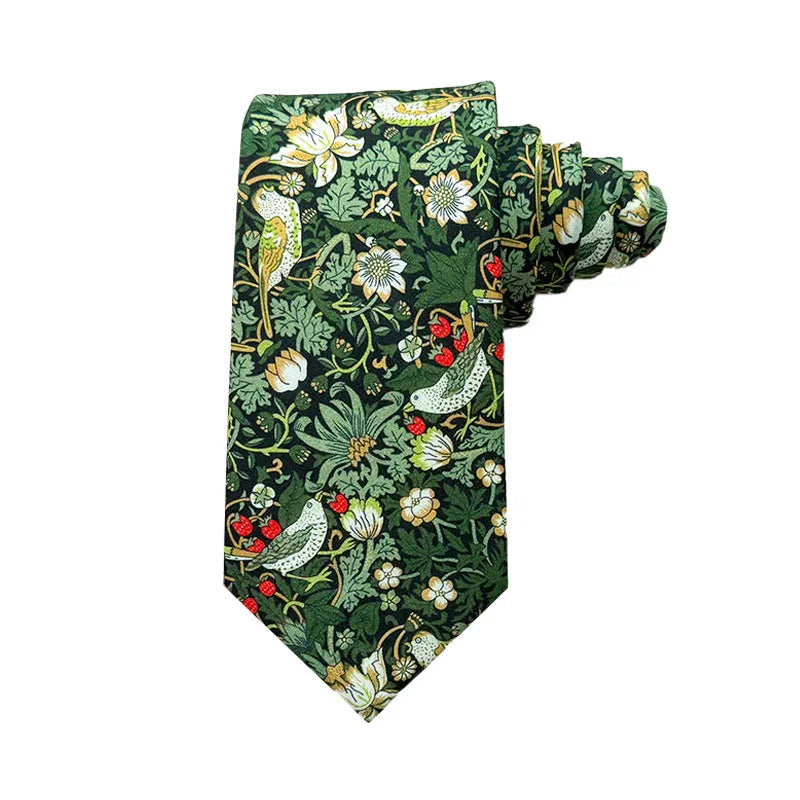Neckties, a staple in men’s fashion, are more than just a versatile fashion accessory. Crafted from luxurious artisanal fabrics, ties are made using the finest silk, wool, and cotton. They hold significant cultural meanings across the globe, symbolising everything from professionalism to rebellion. Let’s take a journey to explore what ties represent in different parts of the world.
Europe: Where It All Began
Croatia: Did you know the modern tie traces its roots back to Croatia? In the 17th century, Croatian soldiers wore cloths around their necks, which evolved into the cravat. The four-in-hand knot, which gained popularity in the 19th century, played a significant role in the evolution of neckties. This stylish piece became a symbol of elegance and eventually influenced the ties we wear today.
United Kingdom: In the UK, ties took off in the 19th century. The regimental tie, representing different British military units, became a way to show allegiance and status. Even today, ties in the UK are synonymous with class and sophistication.
North America: Power and Professionalism
United States: In America, ties are a cornerstone of business attire. The “power tie,” often a bold red, is worn to exude authority and confidence in the corporate world, while slim ties are favored for their modern look, adding a sleek and stylish appearance to any ensemble.
Canada: Canadians share this professional tie culture but are also known for their creativity. Casual Fridays have seen ties being styled in unique, relaxed ways, reflecting a blend of professionalism and personality. It's important to match ties to different occasions, whether it's a formal event, office setting, wedding, or casual gathering, to convey the right level of respect and style.
Asia: Respect and Modernity
Japan: In Japan, ties are crucial in the business realm. The half Windsor knot is often used in professional attire, especially for thin printed silk ties that require a bigger knot. They reflect respect and dedication to one’s job, making them a key element of the “salaryman” attire.
China: Ties in China symbolize modernity and Western influence. They are a common sight in business settings, signifying a connection to global corporate standards.
India: Introduced during the British colonial era, ties in India are now a mark of professionalism and are often worn during formal events and business meetings.
Middle East: Tradition Meets Modern Look and Style
Saudi Arabia and UAE: Traditional attire still reigns supreme, but ties are making their way into corporate settings and youth fashion, symbolising a mix of tradition and modernity. Ties are chosen to suit different occasions, from formal business meetings to casual social events.
Turkey: Ties are popular in Turkey’s business world, reflecting Western influences while maintaining a sense of modern professionalism.
Africa: A Splash of Culture
South Africa: Ties here are common in business and formal settings, often featuring vibrant patterns that blend traditional African designs with modern fashion. These vibrant patterns are often crafted using woven techniques, adding a touch of luxury and artisanal quality to the ties.
Nigeria: While traditional attire is predominant, ties are worn in corporate environments, showcasing a blend of cultural heritage and modern business practices.
South America: Style and Tradition
Brazil: In Brazil, ties are a symbol of sophistication and are frequently worn in business and formal settings. A wide variety of tie colours, from solid colours to patterns, are available to suit different occasions such as business meetings, weddings, and more casual settings.
Argentina: Influenced by European fashion, ties in Argentina are associated with elegance and social status, playing a key role in formal wear.
The Tie as a Fashion Accessory and Symbol of Rebellion
Interestingly, ties have also been used to make rebellious statements through various tie knots. An undone or loosely worn tie knot can signify a break from conformity, challenging traditional norms and expressing individuality. Different types of tie knots, such as symmetrical and asymmetrical knots, can be used to further express one's unique style.
The necktie, a seemingly simple accessory, carries deep cultural significance worldwide. From symbols of professionalism and power to expressions of cultural identity and rebellion, ties have a rich and varied history. Understanding these nuances can deepen our appreciation for this timeless piece of fashion and enhance our connection to global culture.



